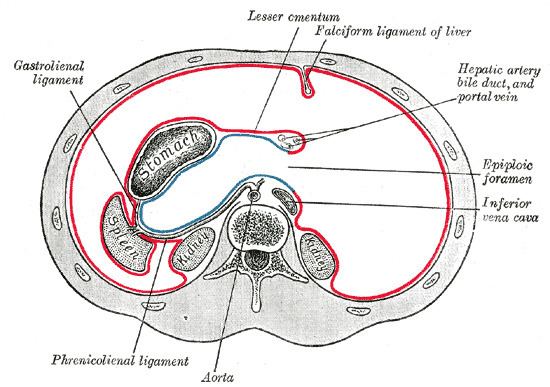Latin foramen omentale FMA 14711 | TA A10.1.02.403 | |
 | ||
In human anatomy, the omental foramen (epiploic foramen, foramen of Winslow after the anatomist Jacob B. Winslow, or uncommonly aditus; Latin: Foramen epiploicum), is the passage of communication, or foramen, between the greater sac (general cavity (of the abdomen)), and the lesser sac.
Borders
It has the following borders:
As the portal vein is the most posterior structure in the hepatoduodenal ligament, and the inferior vena cava lies under the posterior wall, the epiploic foramen can be remembered as lying between the two great veins of the abdomen.
References
Omental foramen Wikipedia(Text) CC BY-SA
